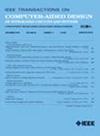面向微架构设计空间探索的异步并行Pareto集合学习
IF 2.9
3区 计算机科学
Q2 COMPUTER SCIENCE, HARDWARE & ARCHITECTURE
IEEE Transactions on Computer-Aided Design of Integrated Circuits and Systems
Pub Date : 2024-12-26
DOI:10.1109/TCAD.2024.3522880
引用次数: 0
摘要
可综合和可参数化的RISC-V微架构,结合基于多目标优化的设计空间探索(DSE),有助于灵活适应各种定制应用的微处理器设计。然而,为了提高设计质量,DSE必须同时考虑架构参数和EDA工具参数,这导致优化复杂度随着参数维度的增加呈指数级增长。彻底探索整个设计空间是不可能的。此外,由于微处理器仿真的耗时性质,尽量减少仿真的数量是必要的。针对这些挑战,我们提出了用于微架构DSE的异步并行Pareto集合学习(APPLE-DSE)。APPLE-DSE利用帕累托集合学习(PSL)技术,通过“轻量级”评估获得近似的帕累托前沿。PSL捕捉由代理模型指导的帕累托集(PS)的结构特征,使其能够探索近似PS中的任何权衡区域。APPLE-DSE采用概率重新参数化(PR)技术,使PSL适应处理离散变量。此外,APPLE-DSE还引入了仿真时间感知异步并行调度策略,进一步提高了优化效率。实验结果表明,在相同的时间预算内,APPLE-DSE在hypervolume上实现了16.81%的最大改进,与最先进的方法相比,每次迭代的算法运行时间加快了127.73倍。本文章由计算机程序翻译,如有差异,请以英文原文为准。
APPLE-DSE: Asynchronous Parallel Pareto Set Learning for Microarchitecture Design Space Exploration
The synthesizable and parameterizable RISC-V microarchitecture, combined with multiobjective optimization-based design space exploration (DSE), facilitates agile adaptation to various microprocessor designs for customized applications. However, to enhance design quality, DSE must consider both architecture parameters and EDA tool parameters, resulting in exponentially increased optimization complexity with the dimensionality of parameters. Exhaustively exploring the whole design space is impossible. Additionally, due to the time-consuming nature of microprocessor simulation, minimizing the number of simulations is imperative. Addressing these challenges, we propose asynchronous parallel Pareto set learning for microarchitecture DSE (APPLE-DSE). APPLE-DSE utilizes the Pareto set learning (PSL) technique to obtain an approximate Pareto front with a “light-weight” evaluation. PSL captures the structural characteristics of the Pareto set (PS) guided by the surrogate models, enabling it to explore any tradeoff area in the approximate PS. Employing the probabilistic reparameterization (PR) technique, APPLE-DSE adapts PSL to handle discrete variables. Furthermore, APPLE-DSE incorporates a simulation time-aware asynchronous parallel scheduling strategy to further enhance optimization efficiency. Experimental results show that APPLE-DSE achieves a maximum improvement of 16.81% in hypervolume within the same time budget and a $127.73\times $ speedup in algorithm run time per iteration compared to state-of-the-art methods.
求助全文
通过发布文献求助,成功后即可免费获取论文全文。
去求助
来源期刊
CiteScore
5.60
自引率
13.80%
发文量
500
审稿时长
7 months
期刊介绍:
The purpose of this Transactions is to publish papers of interest to individuals in the area of computer-aided design of integrated circuits and systems composed of analog, digital, mixed-signal, optical, or microwave components. The aids include methods, models, algorithms, and man-machine interfaces for system-level, physical and logical design including: planning, synthesis, partitioning, modeling, simulation, layout, verification, testing, hardware-software co-design and documentation of integrated circuit and system designs of all complexities. Design tools and techniques for evaluating and designing integrated circuits and systems for metrics such as performance, power, reliability, testability, and security are a focus.

 求助内容:
求助内容: 应助结果提醒方式:
应助结果提醒方式:


